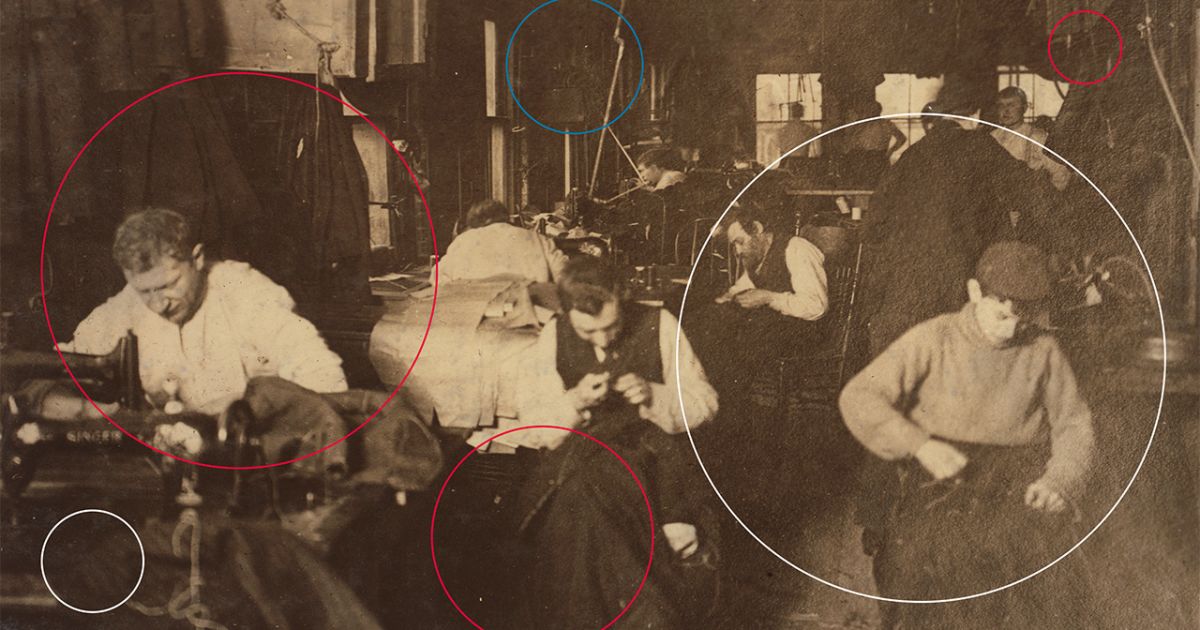Immigration will be a central issue in the upcoming US presidential election, just as it motivated the recent snap elections in France.
After all, the number of migrants rose 27 percent to 281 million globally in 2020, compared with 2010, according to United Nations estimates. The number of individuals displaced by natural disasters could surge to 1.2 billion by 2050, according to the Institute for Economics and Peace.
Beyond the United States and France, the world witnessed the United Kingdom’s Brexit referendum in 2016, a vote motivated by anti-immigration sentiment. In Tunisia, violent mobs rose up against migrants from other parts of Africa in March 2023, a few weeks after President Kais Saied delivered an inflammatory speech blaming the Black foreign-born population for bringing crime to the country and changing its “demographic makeup.” Populist parties in Italy, Finland, and Sweden have received unprecedented support in national elections by running on anti-immigrant platforms.
Yet, none of this is new. A century ago, mounting public pressure prompted Congress to pass the Immigration Act of 1924, which ended the Age of Mass Migration—the period between 1850 and 1920 when more than 30 million European immigrants moved to the US. In fact, American history offers many immigration backlash examples:
- 1840s and 1850s: Almost 1 million Irish immigrants came to the US to flee the deadly Potato Famine of 1846, spurring the rise of the anti-Catholic and nativist Know Nothing Party in Massachusetts.
- 1860s and 1870s: Opposition to Chinese immigrants in the US culminated in the 1882 Chinese Exclusion Act, which banned the entry and the re-entry of Chinese immigrants for more than 70 years.
- 1910s and 1920s: Congress introduced literacy tests and taxes for immigrants in 1917. A few years later, the Immigration Act would add stringent country-specific quotas that limited the number of immigrants to the US and completely excluded people from Asia.
But why do people oppose immigrants so much?
What the research says (and doesn’t say) about immigrants
The late Alberto Alesina, one of the most influential political economists, and I explored these questions before he passed away in 2020. Our work was published recently in the Journal of Economic Literature. We found that anti-immigration arguments tend to fall into two categories:
- Economic. Some people fear that immigrants might increase labor market competition for native-born workers, lowering their wages and their employment prospects.
- Cultural. Immigration is associated with the influx of people with different traditions, races, religions, languages, and social norms. This might generate hostile reactions among those who view immigrants as a threat to national identity and local culture. Cultural concerns are often amplified by the idea that immigrants are unwilling or unable to assimilate.
But has anything happened to validate these concerns? Again, let’s look at American history, turning to recent studies of native- and foreign-born individuals living in the US between 1850 and 1940, and see what lessons all countries can draw. Contrary to popular rhetoric, these studies have found that:
Immigration tends to be economically beneficial.
Immigrants have promoted economic growth, innovation, and productivity. Economists Sandra Sequeira, Nathan Nunn, and Nancy Qian have shown that the parts of the US that received more European immigrants between 1850 and 1920—before the US closed its borders—are richer, safer, and generally more educated. These effects appeared within a few decades, as immigrants favored the increase in industrialization as well as the establishment of more and larger firms, and then grew over time.
“After 1880, parts of the US West that were more impacted by the Chinese Exclusion Act grew at considerably lower rates than the rest of the country.”
Evaluating the effects of the Chinese Exclusion Act of 1882, in joint work with Joe Long, Carlo Medici, and Qian, we found similar results. After 1880, parts of the US West that were more impacted by the Chinese Exclusion Act grew at considerably lower rates than the rest of the country. Our evidence suggests that the economy of more impacted areas slowed down because:
- Chinese workers were concentrated in key sectors, such as railroads, manufacturing, and mining.
- It was difficult and costly to quickly substitute Chinese workers with other workers in the isolated West.
The US labor force hasn’t suffered from immigrant competition. At least in the historical US context, there’s no evidence to prove that argument. Our study with Long, Medici, and Qian finds that employment and the quality of the jobs held by native-born workers declined or, at best, didn’t increase as a consequence of Chinese exclusion.
Stanford University’s Ran Abramitzky and Princeton University’s Leah Boustan—among the most knowledgeable economists on the topic of US immigration—reached a similar conclusion by examining the effects of anti-immigration laws passed in the 1920s. They and their collaborators showed that native-born workers living in areas of the US that lost more European immigrants because of the laws’ restrictions didn’t benefit economically. If anything, natives’ employment in immigrant-intensive sectors, such as mining, declined more in areas that lost more immigrants because of the quotas.
“To deal with the shortage of European immigrants, US employers recruited Mexican and Canadian immigrants and introduced labor-saving technologies.”
Why did European immigrants not reduce wages and employment of native-born workers? Likewise, why did the exclusion of Chinese immigrants not increase wages earned by other workers? One answer to these questions is that immigrants possess skills that are complementary to those of natives, and the latter end up specializing in jobs that have higher earnings prospects. A second answer is that the economy adjusts to immigrant-induced changes in the labor force. For instance, to deal with the shortage of European immigrants, US employers recruited Mexican and Canadian immigrants and introduced labor-saving technologies.
Cultural concerns drive fears more than economics—and such worries need to be taken seriously. Businesses needed workers and immigrants helped nascent economies flourish and yet, people still pushed back, especially when it seems like the cultural gaps are too large to bridge.
A recent study I published on the political effects of immigration in the early 20th century US examined whether the strength of anti-immigrant reactions in the early 20th century depended on the cultural distance between immigrants and natives. To proxy for cultural distance, I used linguistic distance from English and religion, noting that anti-Catholicism was widespread in the US at the time. Consistent with cultural concerns being important drivers of natives’ backlash, I found that only immigrants who were linguistically far from English and who came from majority non-Protestant countries fueled political opposition.
In other words, native-born people feared immigrants who seemed more different than them to the point that they were willing to hobble their businesses and economies.
Lessons from history for the US
You might be questioning the relevance of these studies; they focus on immigration at the height of manufacturing and industrialization, unlike the artificial intelligence-driven economy of the future. But I would argue that today’s America shares several similarities with the US labor market of the early 20th
century. For example:
- Labor was scarce then, as it is today. Firms operating in the most dynamic sectors, such as tech and semiconductors, which, incidentally, are also the sectors where many immigrants are employed, frequently complain about labor shortages.
- Immigrants held low-paying occupations then and now. These occupations include construction, household services, and agriculture. This allowed native-born individuals to climb the “quality ladder of jobs.”
- Native-born Americans were older, and still are. Immigrants can help societies cope with aging, both by working in nursing homes and assisting older natives and by contributing to the pension system.
But what about Europe?
Besides economic structure, Europe—and to some extent the US—today differs from the early 20th century America in two additional respects: the size of its welfare state and perception of new immigrant behavior.
First, the welfare state today in Europe is larger, and native-born individuals may perceive immigrants as being net consumers of public goods. While it is true that, within the first few years after arrival, immigrants are more likely to rely on public welfare—they tend to be poorer and have more kids than native-born individuals—the opposite happens over a time horizon of 15 to 20 years. In aging societies, by paying taxes and preventing the decline of the size of the labor force, immigrants are key contributors to the welfare state. Restricting immigration would require budget cuts that would harm natives by reducing pension benefits or increasing the age of retirement, for example.
“It’s thus impossible to conclude that immigration has no economic costs, at least in the short term and for a subset of workers.”
Second, several politicians have argued that, differently from the experience of historical European immigrants to the US, new immigrant waves don’t assimilate. In fascinating work, summarized in their recent book, Abramitzky and Boustan debunk this myth. Comparing the experience of historical European immigrants with that of more recent, non-European immigrants to the US, they conclude that the pace of immigrant assimilation today is similar to what prevailed 100 years ago.
When interpreting evidence from the past, it is important to note that historical data are typically available only every 5 years or, more often, 10 years. Researchers can’t observe the potential immediate adjustment costs faced by native workers, such as temporarily lower wages or higher unemployment. It’s thus impossible to conclude that immigration has no economic costs, at least in the short term and for a subset of workers. However, at least based on historical evidence from the US, if immigration had negative economic effects on native workers, such effects were short-lived and disappeared within a decade.
A way forward with immigration policy
Should leaders eliminate all immigration restrictions and dismiss the concerns of native-born voters? The answer is no. The likely backlash would soon lead to a policy reversal, resulting in even stricter immigration restrictions—with negative consequences for the economy. However, here are policy approaches that government leaders and policymakers might consider:
Stress the contributions of immigrants to their societies. One notable example is that of sport, where many stars—from soccer to basketball—are either naturalized immigrants or have foreign-born parents. Lamine Yamal and Nico Williams, who were pivotal in Spain’s success in the 2024 Euro Cup, epitomize this idea. Governments can rally around these figures to showcase the advantages of a multicultural and diverse society. Such information campaigns can be combined with policies aimed at fostering the integration of foreign-born individuals, favoring their entry in the labor market, and encouraging community interaction.
Coordinate immigration policies internationally. For a successful immigration policy, coordination among member states—and perhaps even among European countries and the US, the UK, and Canada—is key. This would help spread the inflow of immigrants over time and across space. Since governments have limited resources, it is simply not possible to fully accommodate and support the integration of many immigrants and refugees who arrive simultaneously. Moreover, gradual changes in the composition of the population would reduce the likelihood that hostile reactions, linked to cultural concerns, would erupt.
Think of policies as multigenerational opportunities. While immigration doesn’t create economic losses among natives over the medium run, large and sudden inflows of immigrants may generate short-run congestion costs and lead to temporary economic displacement of some native workers.
However, considering the long-term contributions of immigrants and their children, immigration policy becomes a way to unlock new opportunities for receiving countries and their populations for decades to come.
Marco Tabellini is an assistant professor in the Business, Government, and International Economy Unit and is affiliated with the Center for Economic Policy Research and the Centre for Research and Analysis of Migration. He studies the political and the economic effects of immigration.
You Might Also Like:
Feedback or ideas to share? Email the Working Knowledge team at hbswk@hbs.edu.
Image: Image by HBSWK with asset from Library of Congress
“Harvard Business School is the graduate business school of Harvard University, a private research university in Boston, Massachusetts. It is consistently ranked among the top business schools in the world and offers a large full-time MBA program, management-related doctoral programs, and executive education programs.”
Please visit the firm link to site





